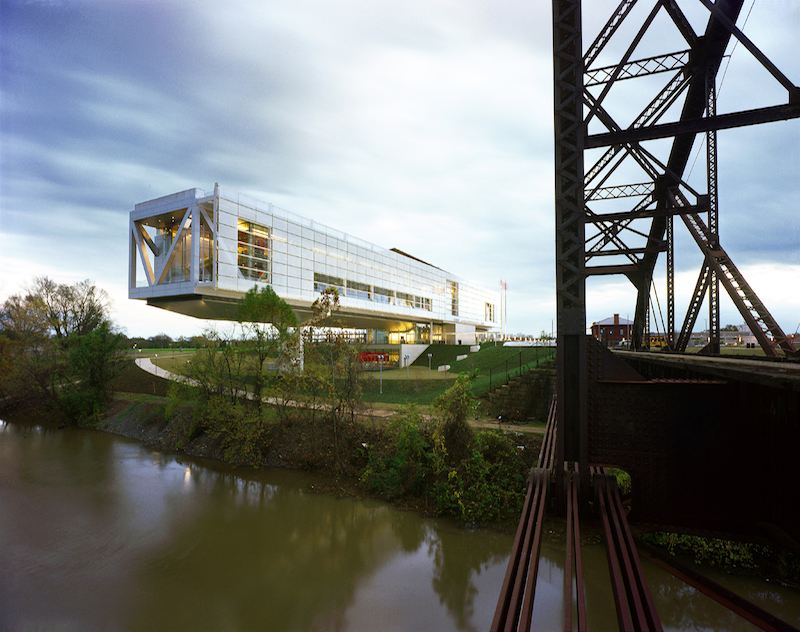The Board of Directors and the Strategic Council of the American Institute of Architects (AIA) voted today to award the 2018 AIA Gold Medal to James Stewart Polshek, FAIA. The Gold Medal honors an individual or pair of architects whose significant body of work has had a lasting influence on the theory and practice of architecture. Polshek will be honored at the AIA Conference on Architecture 2018 in New York City.
Born in Akron, Ohio, Polshek earned a Master of Architecture degree from Yale in 1955. In 1963 Polshek started his first architecture firm, James Stewart Polshek Architect. His firm evolved through multiple iterations — settling in 2010 on Ennead Architects. Polshek has fostered an environment wherein design excellence, effective collaboration and rigorous research work in concert to create enduring architecture. His unparalleled vision and leadership has earned the firm countless accolades, including more than 200 design awards, the 1992 AIA Architecture Firm Award, and 15 National Honor Awards for Architecture.

Concurrent to leading one of the nation's most recognized firms, Polshek served as dean of Columbia University’s Graduate School of Architecture, Planning and Preservation from 1972 to 1987. At the time, Columbia played a central role in the debate over style and meaning during a period in which architecture was being fundamentally questioned. His collaborative spirit led to a complete revision of the school’s curriculum and direction that, in turn, reversed its decline and attracted world-class faculty. Polshek’s 1987 restoration and renovation of New York’s Carnegie Hall began with a master plan that helped establish his enduring approach to revitalization. A complete restoration of the hall’s original details as well as the implementation of new ones —lighting, graphics, and a new marquee — were coupled with a heavy dose of advocacy for landmark buildings threatened by market forces.

In Washington, D.C., the 645,000-square-foot Newseum/Freedom Forum Headquarters, completed in 2008, is a monument to journalism and free speech. The architectural expression of the institution’s mission manifests in a symbol of openness: a 4,500-square-foot clear glass “window” woven into the fabric of the city’s Penn Quarter. Polshek’s National Museum of American Jewish History in Philadelphia, just a block from Independence Hall, references the immigrant experience in America through two interlocking volumes of opaqueness and transparency. The museum’s high-profile historical context bolsters its efforts to inspire people of all backgrounds.
Polshek’s sensitivity as an architect and his willingness to give credit to others — whether they be his clients, staff or collaborators — have helped restore the promise that architecture can be an uplifting force in the world. Everywhere that he has worked, and throughout his eloquent writings, he has raised the level of discussion while pursuing an unambiguous goal of architecture as a healing art.

Polshek is the 74th recipient of the Gold Medal. He joins the ranks of such visionaries as Frank Lloyd Wright (1949), Louis Sullivan (1944), Le Corbusier (1961), Louis I. Kahn (1971), I.M. Pei (1979), Thom Mayne (2013), Julia Morgan (2014), Moshe Safdie (2015), Denise Scott Brown & Robert Venturi (2016), and Paul Revere Williams (2017). In recognition of his legacy to architecture, Polshek’s name will be chiseled into the granite Wall of Honor in the lobby of the AIA headquarters in Washington, D.C.

Related Stories
| Nov 4, 2013
Architecture and engineering industry outlook remains positive on all major indicators
While still below pre-recession levels, all of the key indicators in the latest Quarterly Market Forecast (QMF) report from PSMJ Resources remain in positive territory.
| Nov 1, 2013
CBRE Group enhances healthcare platform with acquisition of KLMK Group
CBRE Group, Inc. (NYSE:CBG) today announced that it has acquired KLMK Group, a leading provider of facility consulting, project advisory and facility activation solutions to the healthcare industry.
| Oct 31, 2013
74 years later, Frank Lloyd Wright structure built at Florida Southern College
The Lakeland, Fla., college adds to its collection of FLW buildings with the completion of the Usonian house, designed by the famed architect in 1939, but never built—until now.
| Oct 31, 2013
CBRE's bold experiment: 200-person office with no assigned desks [slideshow]
In an effort to reduce rent costs, real estate brokerage firm CBRE created its first completely "untethered" office in Los Angeles, where assigned desks and offices are replaced with flexible workspaces.
| Oct 30, 2013
15 stellar historic preservation, adaptive reuse, and renovation projects
The winners of the 2013 Reconstruction Awards showcase the best work of distinguished Building Teams, encompassing historic preservation, adaptive reuse, and renovations and additions.
| Oct 30, 2013
11 hot BIM/VDC topics for 2013
If you like to geek out on building information modeling and virtual design and construction, you should enjoy this overview of the top BIM/VDC topics.
| Oct 29, 2013
Increased backlogs, margins lead to renewed optimism in global construction
After prolonged economic uncertainty, a majority of executives in the global engineering and construction sector have fresh confidence in the growth prospects for the industry, according to KPMG International's 2013 Global Construction Survey. A general increase in backlogs and margins is giving cause for optimism across the industry, with further growth anticipated.
| Oct 29, 2013
BIG opens subterranean Danish National Maritime Museum [slideshow]
BIG (Bjarke Ingels Group) has completed the Danish National Maritime Museum in Helsingør. By marrying the crucial historic elements with an innovative concept of galleries and way-finding, BIG’s renovation scheme reflects Denmark's historical and contemporary role as one of the world's leading maritime nations.
| Oct 28, 2013
Urban growth doesn’t have to destroy nature—it can work with it
Our collective desire to live in cities has never been stronger. According to the World Health Organization, 60% of the world’s population will live in a city by 2030. As urban populations swell, what people demand from their cities is evolving.
| Oct 28, 2013
Metal roofs are topping more urban dwellings
Given their durability and ease of use, metal roofs have been a common feature on rural houses for decades. Now they’re becoming an increasingly popular choice on urban dwellings as well.

















